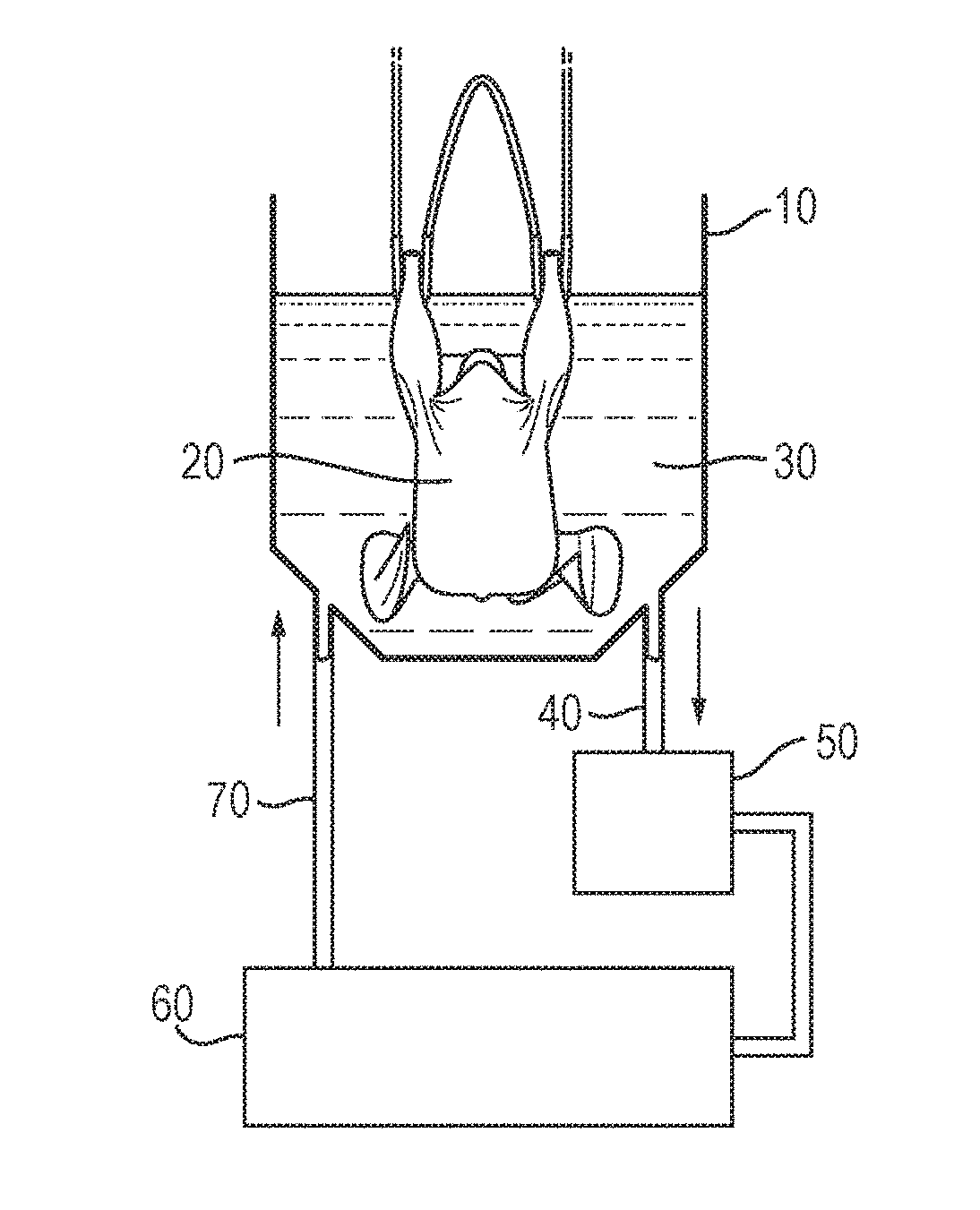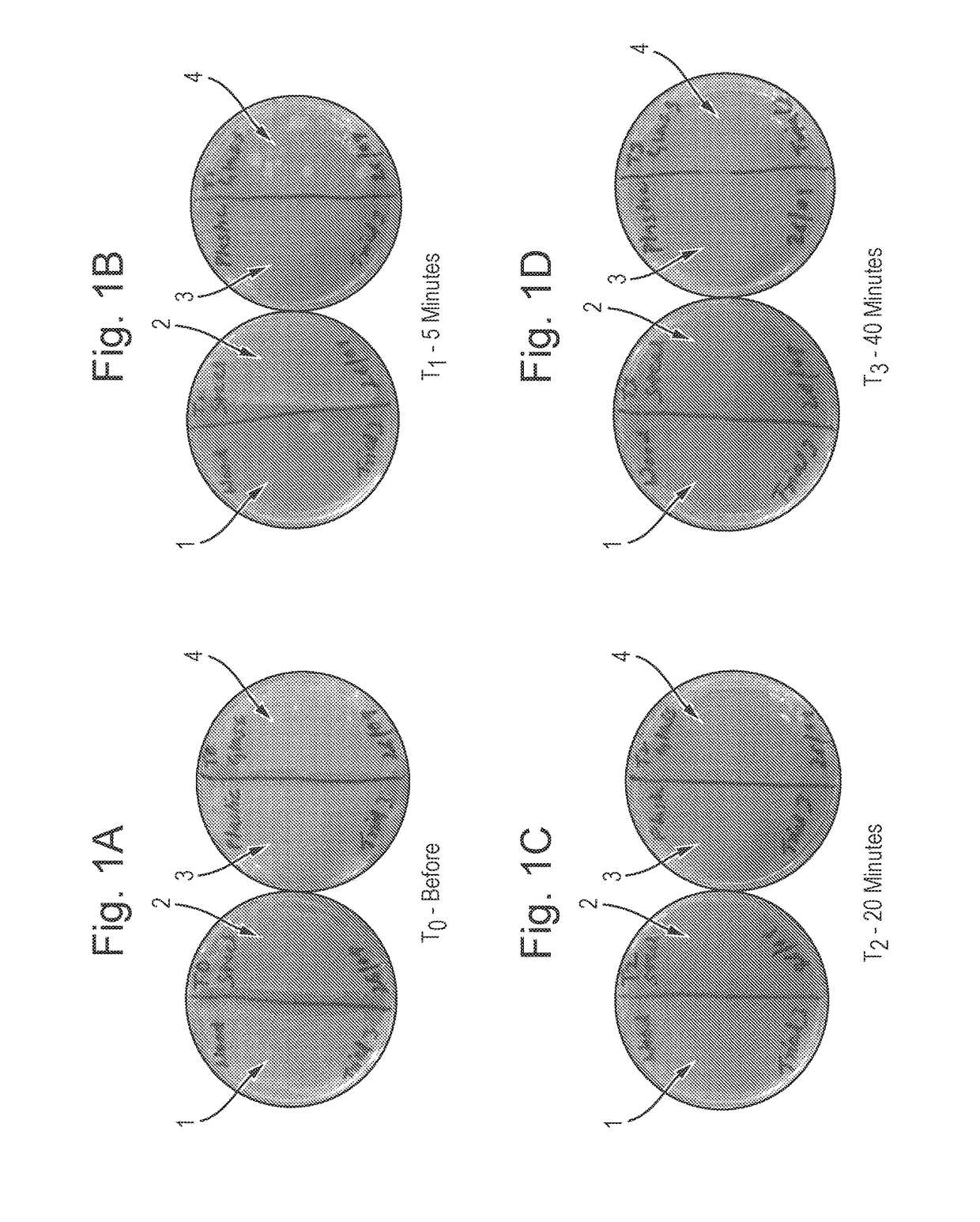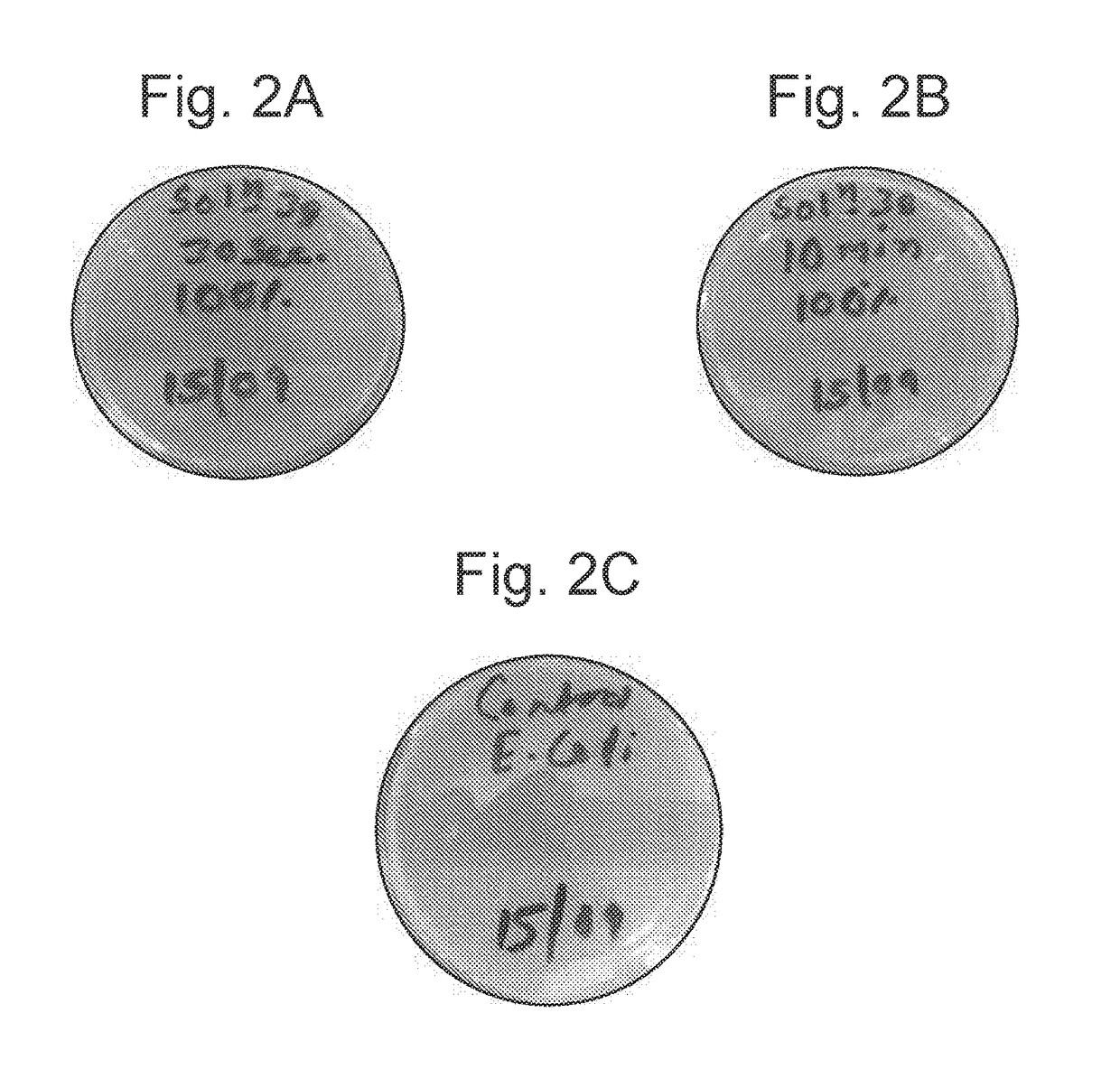Electrolyzed water composition
a technology of electrolyzed water and water composition, which is applied in the direction of water treatment parameter control, specific water treatment objectives, food preservation, etc., can solve the problems of food products spoilage, reduced shelf life and/or food poisoning of consumers, so as to improve the effect of electrolyzed water composition
- Summary
- Abstract
- Description
- Claims
- Application Information
AI Technical Summary
Benefits of technology
Problems solved by technology
Method used
Image
Examples
example 1
Electrolyzed Water Composition
[0129]An electrolyte solution comprising 16 g anhydrous sodium carbonate (Na2CO3) and 14 g sodium chloride (NaCl) in 5 l of water was prepared. The electrolyte solution is stored within a reservoir chamber in fluid communication with an electrolytic cell.
[0130]A feed stream comprising the electrolyte solution was introduced into the electrolytic cell. The feed stream can optionally include one or more additional salts to enhance the disinfectant properties of the resultant electrolyzed water composition. The electrolytic cell is a non-membrane electrolytic cell. The electrolytic cell comprises a casing, a plurality of boron doped diamond electrodes (BDEs) located within the cell, and metal ‘contact plates’ used for transmitting charge across the electrolyte solution.
[0131]The BDEs are sheet-like components and are provided in a stack of between 3 and 10 sheets. Each sheet is located at a fixed distance away from an adjacent sheet. The distance between a...
example 2
[0138]With reference to Table 1, the electrolysed water composition of Example 1 was applied using an EN1276 test. EN1276 test is the European standard test method to formally evaluate the bactericidal activity of a disinfectant. To meet the requirements of EN 1276 at least a 5 Log10, reduction in test bacteria within 5 minutes is required.
[0139]The test method involved mixing 1ml of the test bacteria, in this instance E. coli, with 1 ml of interfering substance, in this case 0.3% w / v albumin (simulating dirty conditions), and then adding 8 ml of the electrolysed water composition. After the required contact time, 0.1 ml was removed and added to 8.9 ml of the neutralizer (sterile water) and 1 ml of sterile distilled water. Following a 5 minute neutralization period, 1 ml was plated onto LB Agar to detect surviving test bacteria.
[0140]As shown in Table 1, when tested in accordance with EN 1276, the electrolysed water composition achieved >8 log10 reduction at 1 and 5 minutes at room ...
example 3
E. coli Elimination Tests using Dry Fogging
[0143]With reference to FIGS. 1A-1D, the electrolyzed water composition of Example 1 was applied at a low dosage using a dry fogging method to four different substrates contaminated with E. coli: Wood 1, Steel 2, Plastic 3 and Glass 4. It is however to be understood that the composition may be used to disinfect any suitable substrate, and is not limited to use for disinfecting the exemplified substrates.
[0144]The electrolyzed water composition was applied using a pulsFOG Rapid Fogger, fitted with a W03 nozzle (herein referred to as a fogging mist applicator). The fogging mist applicator's output rate was approximately 4.5 L / hour, using 2 bar of pressure from a separate air compressor. The output droplet size of the electrolyzed water composition was around 10 to 15 microns.
[0145]The fogging mist applicator was located at one end of a shipping container and the four substrates were located adjacent the opposing surface of the shipping contai...
PUM
| Property | Measurement | Unit |
|---|---|---|
| voltage | aaaaa | aaaaa |
| voltage | aaaaa | aaaaa |
| current | aaaaa | aaaaa |
Abstract
Description
Claims
Application Information
 Login to View More
Login to View More - R&D
- Intellectual Property
- Life Sciences
- Materials
- Tech Scout
- Unparalleled Data Quality
- Higher Quality Content
- 60% Fewer Hallucinations
Browse by: Latest US Patents, China's latest patents, Technical Efficacy Thesaurus, Application Domain, Technology Topic, Popular Technical Reports.
© 2025 PatSnap. All rights reserved.Legal|Privacy policy|Modern Slavery Act Transparency Statement|Sitemap|About US| Contact US: help@patsnap.com



